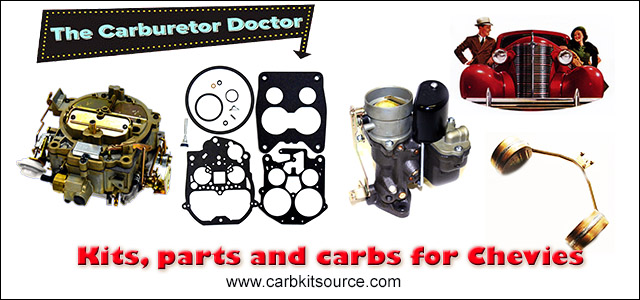The ABCs of Carburetion
UM-900 (1959)
Page 3 of 19
|
|
|||
 |
|||
|
|
|||
|
THE CARBURETOR'S JOB
|
|||
|
|
|||
 |
WHY A CARBURETOR?
As a liquid, gasoline
is of little or no use to an engine. Its energy can be released only
by combustion, or burning; in order to burn properly it must be in
vapor form, properly mixed with air, and delivered to the cylinder of
the engine as a combustible mixture, where it is first compressed and
then ignited by the spark plug.
|
||
 |
|||
|
WHAT MUST THE CARBURETOR DO?
It is the
carburetor's responsibility to meter, atomize, and distribute the
gasoline throughout the air being drawn into the engine. It must do
these things properly through a wide range of speed, load, and
temperature, in answer to the demands of the driver, who controls the
amount of fuel flow by his use of the accelerator.
Since the modern
carburetor must do all its duties automatically with changes in
conditions, it is bound to be an intricate device and appears very
complicated. However, when reduced to basic functions and studied one
step at a time, carburetion is more easily understood.
|
|||
|
|
|||
|
3
|
|||
|
|
|||
